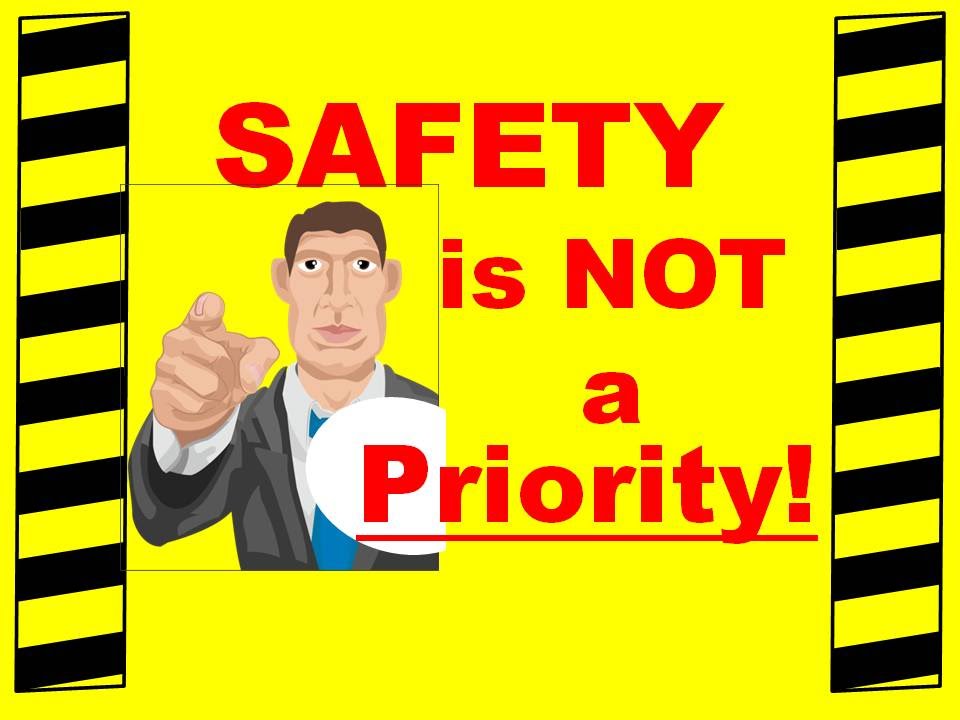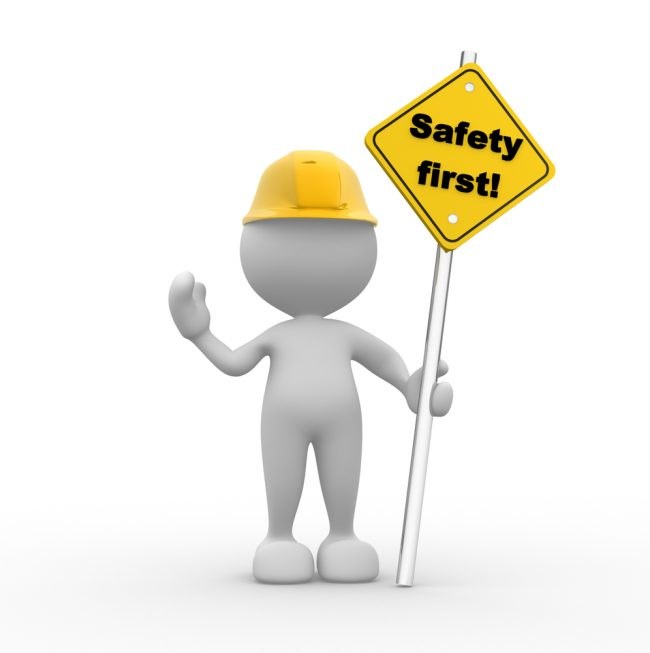Teen's Scalp Ripped Off By Factory Machine, Miraculously Survives
Adelaide, Australia - In a shocking incident that unfolded in November 2020, a teen's scalp ripped off by factory machine at an Australian juice company, Nippy's Waikerie Producers Pty Ltd, while she was working at a packing shed in South Australia's Riverland. The incident has resulted in a significant penalty of AU$120,000 for the company, as determined by the SA Employment Tribunal.
Author:Morgan MaverickReviewer:Professor JhizJul 13, 20231.9K Shares147.2K Views

Adelaide, Australia - In a shocking incident that unfolded in November 2020, a teen's scalp ripped off by factory machineat an Australian juice company, Nippy's Waikerie Producers Pty Ltd, while she was working at a packing shed in South Australia's Riverland. The incident has resulted in a significant penalty of AU$120,000 for the company, as determined by the SA Employment Tribunal.
Teen's Scalp Ripped Off By Factory Machine
The victim, identified as 18-year-old Alexandra Trandafil, was carrying out her duties when she was asked to clear a blockage from a running conveyor belt. Trandafil's hair got entangled in an unguarded sprocket and drive-chain system, leading to the traumatic incident.
SA Employment Tribunal deputy president Katherine Eaton described the severity of the accident.
“„Shortly after lunch, her hair was caught in unguarded machinery and her entire scalp was ripped from her head.- Katherine Eaton, SA Employment Tribunal Deputy President
Following the incident, immediate medical intervention was sought in an attempt to reattach her scalp. Unfortunately, the efforts were only partially successful, leaving Trandafil with permanent hair loss and extensive scarring. In addition to the physical impact, Eaton highlighted the psychological toll on the young woman.
“„Not surprisingly, she also suffers psychologically from the effects of the injury and her ongoing disability and disfigurement.- Katherine Eaton, SA Employment Tribunal Deputy President
The SA Employment Tribunal found Nippy's Waikerie Producers Pty Ltd guilty of failing its health and safety duty under the Work Health and Safety Act. The company had previously undergone a safety review in 2013, which had identified the potential for severe injury if hands or hair were caught in the moving chains.
Shockingly, despite this prior knowledge, the company had neglected to implement necessary safety measures, including placing guards over the hazardous area.
Expressing her dismay at the company's negligence, Eaton stated:
“„Despite this, not even the simple measure of placing a guard over that section of the machinery had been undertaken.That workers were required as part of their duties to enter that area while the elevator conveyor was operating is inexplicable.- Katherine Eaton, SA Employment Tribunal Deputy President
The tribunal imposed a criminal conviction and a fine of AU$120,000 on Nippy's Waikerie Producers Pty Ltd, accompanied by court fees.
The tragic incident has had a lasting impact on Trandafil's life. The young victim has already undergone multiple surgical procedures and will require ongoing treatment in the future. The accident abruptly disrupted her aspirations and transformed her life from one filled with hope and promise to one plagued by shock, trauma, and physical disfigurement.
According to the findings of Deputy President Katherine Eaton from the SA Employment Tribunal:
“„She thought she was going to die. In an instant, her young and hopeful life flipped into shock, trauma, ongoing pain, and disfigurement. She endured not only the pain and shock of her physical injury, but the terror of looking up and seeing her hair and scalp hanging from the machine in front of her.- Katherine Eaton, SA Employment Tribunal Deputy President
The incident serves as a stark reminder of the importance of maintaining strict safety protocols and adequately training employees in potentially hazardous work environments.
The aftermath of the accident revealed the lack of proper training and warning signs at the packing shed. Trandafil, who had been working at the plant to save money for a trip abroad, had not received any training regarding the risks associated with working near the conveyor belt.
In light of this devastating incident, the company's manager reached out to Trandafil's family to offer an apology and compensation of $60,000. However, this gesture cannot undo the physical and emotional trauma endured by the young victim.
As workplace safety remains a paramount concern, incidents like these highlight the critical need for companies to prioritize employee well-being and adhere to strict safety standards. The significant fine imposed on Nippy's Waikerie Producers Pty Ltd serves as a stern reminder that negligence in maintaining a safe work environment can have severe consequences.
The SA Employment Tribunal's ruling will hopefully contribute to raising awareness and preventing similar accidents from occurring in the future. It is a tragic reminder that the duty to protect the safety and welfare of employees should always be of paramount importance, and shortcuts or negligence can have life-altering consequences.
Importance Of Workplace Safety And Employee Well-Being
In any work environment, safety rules play a crucial role in ensuring the well-being of employees and the overall success of the company. These regulations are designed to prevent and mitigate accidents, minimize risks, and create a safe and productive workplace. Understanding the significance of workplace safety rules and adhering to them is essential to protect oneself and fellow coworkers from potential injuries.

Safety is NOT a Priority - Safety Training Video - Preventing Workplace Accidents and Injuries
Why Are Workplace Safety Rules Important?
Workplace safety rules hold immense importance for various stakeholders involved. Let's explore the reasons why these rules are crucial:
- Protection of employees - Workplace safety rules are primarily aimed at safeguarding the well-being of employees. By identifying potential hazards, implementing preventive measures, and promoting safe practices, these rules reduce the risk of on-the-job accidents and injuries. This, in turn, ensures the physical health and safety of the workforce.
- Customer and brand reputation - Maintaining a safe work environment is not only beneficial for employees but also for customers and the company's brand reputation. When companies prioritize workplace safety, they demonstrate a commitment to their customers' well-being. This can enhance customer trust and loyalty, leading to a positive brand image.
- Maximizing productivity -By enforcing safety rules, companies can minimize work-related accidents and injuries. This helps prevent work disruptions, employee absences, and potential legal issues. A safe work environment promotes uninterrupted workflow, leading to enhanced productivity and efficiency.
- Improving job satisfaction -Employees who feel safe and protected in their work environment tend to experience higher job satisfaction. When employees know that their company prioritizes their well-being, they are more likely to feel valued and motivated, leading to increased morale and job retention.
- Positive brand perception -A safe workplace can contribute to a positive brand perception among customers, stakeholders, and the public. Companies that prioritize safety are viewed as responsible and ethical, which can enhance their reputation and market standing.
20 Most Important Safety Rules In The Workplace
Here are examples of safety rules in a workplace:
Follow The Dress Code
Adhering to the workplace dress code is essential for safety reasons. This may include wearing specific footwear, avoiding loose clothing, and complying with personal protective equipment (PPE) requirements.
Wear Safety Gear
Depending on the nature of the work, employees may be required to wear safety gear such as helmets, gloves, goggles, or respirators. These items provide protection against potential hazards.
Maintain Personal Hygiene
Practicing good personal hygiene, including regular handwashing and cleanliness, helps prevent the spread of illness in the workplace and promotes overall health.
Take Responsibility For Personal Safety
Employees should take ownership of their personal safety by following safety procedures, reporting potential hazards, and being vigilant about their surroundings.
Maintain A Clean Workspace
Keeping individual work areas clean and organized reduces the risk of accidents and promotes an efficient and safe work environment.
Follow Work Procedures
Adhering to established work procedures ensures that safety standards are met. It is important to follow instructions and not deviate from prescribed protocols.
Learn How To Act In An Emergency
Familiarize yourself with emergency protocols, such as evacuation procedures, fire safety measures, and first aid techniques. Knowing how to respond in emergencies can save lives.
Report Accidents If They Occur
Promptly report any accidents or injuries to supervisors or designated personnel. Reporting incidents helps ensure that appropriate measures are taken to prevent similar incidents in the future.
Report Unsafe Conditions
If you observe any unsafe practices or conditions, such as faulty equipment or potential hazards, report them immediately. This allows for prompt corrective actions to be taken.
Lift Objects Carefully
Use proper lifting techniques, such as bending at the knees and using the legs instead of the back, to avoid strains and injuries when lifting heavy objects. Seek assistance or use equipment if needed.
Operate Machinery That You Are Familiar With
Only operate machinery or equipment that you have received proper training for. Using unfamiliar equipment without proper training can lead to accidents.
Use Break Times Effectively
Take regular breaks to rest and recharge. This helps prevent fatigue-related accidents and improves overall focus and productivity.
Stay In Your Work Zone
Remain within your designated work area and be familiar with the rules and safety protocols specific to that area. If you need to enter another area, seek guidance from a knowledgeable colleague.
Stay Alert And Attentive
Pay attention to your surroundings and stay focused on your tasks. Minimize distractions to avoid accidents and errors.
Keep Exits Clear
Ensure that exits and pathways are unobstructed to facilitate safe evacuation in case of emergencies. Do not block fire exits or emergency exits with objects or debris.
Ask For Help When Needed
If a task requires assistance or specialized knowledge, seek help from qualified personnel. Avoid taking unnecessary risks by attempting tasks beyond your capabilities.
Use Caution Signs
Display caution signs and labels in appropriate areas to alert others of potential hazards or unsafe conditions. Observe and obey caution signs placed by others.
Use Proper Equipment
Utilize the appropriate tools and equipment for specific tasks. Using improper or faulty equipment can lead to accidents and injuries.
Eat In Designated Areas
Respect food and drink restrictions in certain areas to prevent spills, contamination, and safety hazards. Adhere to company policies regarding eating and drinking in the workplace.
Follow Safety Guides
Familiarize yourself with safety manuals, guidelines, and procedures provided by the company. These resources offer valuable information and instructions to maintain a safe work environment.
Tips For Maintaining Safety In The Workplace
In addition to following safety rules, here are some tips to help maintain a safe work environment:
Hold Regular Safety Meetings
Conduct regular safety meetings to communicate and reinforce safety protocols, provide training on new procedures, and address any safety concerns or updates. These meetings serve as a platform for open discussions and help foster a safety-conscious culture within the organization.
Hire Safety Personnel
Consider appointing safety officers or hiring a safety director who can assess the work environment, enforce safety regulations, and provide training to employees. Having dedicated personnel focused on safety can greatly contribute to maintaining a safe workplace.
Treat All Incidents Seriously
Take every incident of an unsafe condition or practice seriously. Encourage employees to report incidents, address safety concerns promptly, and conduct thorough investigations to prevent similar incidents in the future. Regular safety drills, safety handbooks, and meetings can help train employees on proper safety protocols.
Promote A Safety Culture
Foster a culture of safety by encouraging employees to take responsibility for their own safety and the safety of others. Recognize and reward safe behaviors, provide ongoing safety training, and create channels for employees to voice safety concerns or suggestions.
Regular Maintenance And Inspections
Implement regular maintenance schedules for equipment and machinery to ensure they are in safe working condition. Conduct routine inspections to identify and address potential hazards or risks.
Encourage Ergonomic Practices
Educate employees about ergonomics and provide ergonomic equipment when necessary. Promote proper posture, stretching exercises, and ergonomic workstation setups to reduce the risk of musculoskeletal injuries.
Encourage Open Communication
Create an environment where employees feel comfortable reporting safety concerns or incidents without fear of reprisal. Foster open communication channels and establish a non-punitive reporting system to encourage proactive safety engagement.
Continuous Improvement
Regularly review and update safety protocols based on industry best practices, new regulations, and lessons learned from incidents. Encourage employees to provide feedback and suggestions for improving safety measures.
By implementing these measures and cultivating a safety-focused culture, companies can ensure a safer work environment, protect the well-being of their employees, and enhance overall productivity and success.
Remember, safety in the workplace is everyone's responsibility. Adhering to safety rules and promoting a culture of safety not only protects employees but also contributes to the long-term success of the organization.
People Also Ask
What Are The OSH Duties And Responsibilities Of Employees?
- Follow all lawful employer safety and health rules and regulations.
- Wear or use required protective equipment while working.
- Report hazardous conditions to the employer.
- Report any job-related injury or illness to the employer and seek prompt treatment.
What Are The OSH Duties And Responsibilities Of Employers?
- Provide a workplace free from serious recognized hazards.
- Comply with standards, rules, and regulations issued under the OSH Act.
- Examine workplace conditions to ensure compliance with applicable OSHA standards.
- Ensure employees have and use safe tools and equipment, and properly maintain them.
What Are The Basic Rights Of Workers?
Workers' rights encompass a broad range of human rights, including:
- Right to decent work and freedom of association.
- Right to equal opportunity and protection against discrimination.
- Right to health and safety in the workplace.
- Right to privacy at work, among many others.
Conclusion
In conclusion, workplace safety rules are of paramount importance to protect employees, customers, and the reputation of the company. Failure to adhere to these rules can have devastating consequences, as seen in the tragic incident where a teen's scalp ripped off by factory machine.
This horrifying event serves as a stark reminder of the critical need for strict adherence to safety protocols and the implementation of preventative measures in all work environments. By prioritizing safety, organizations can create a culture that values the well-being of their employees, fosters productivity, and mitigates the risk of accidents and injuries.
It is crucial that employers and employees alike recognize the gravity of workplace safety and work collaboratively to maintain a safe and secure work environment for all.

Morgan Maverick
Author
Morgan Maverick is an unorthodox news reporter driven by an insatiable hunger for the truth. Fearless and unconventional, he uncovers hidden narratives that lie beneath the surface, transforming each news piece into a masterpiece of gritty authenticity. With a dedication that goes beyond the boundaries of conventional journalism, Morgan fearlessly explores the fringes of society, giving voice to the marginalized and shedding light on the darkest corners.
His raw and unfiltered reporting style challenges established norms, capturing the essence of humanity in its rawest form. Morgan Maverick stands as a beacon of truth, fearlessly pushing boundaries and inspiring others to question, dig deeper, and recognize the transformative power of journalism.

Professor Jhiz
Reviewer
Professor Jhiz brings fun to teaching anatomy. Born in China, she shares her fascination for how the body works.
Students say her lectures are lively with jokes and stories. She draws cartoon diagrams that highlight structures creatively.
Professor seeks to inspire curiosity and joy in anatomy. She treats each class like a show using props and costumes.
When not teaching, Jhiz enjoys karaoke and novelty socks. Her goal is passing on a spirit of wonder to students.
Latest Articles
Popular Articles


